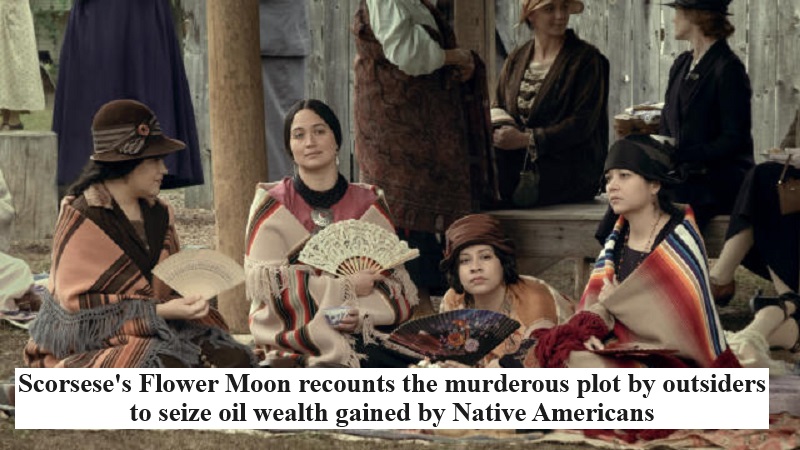
Martin Scorsese’s latest film, “Killers of the Flower Moon,” delves into the captivating narrative of how the Osage Nation, a Native American community, acquired substantial oil wealth during the early 20th century and the sinister plot by outsiders to wrest it away.
As the movie gears up for its release in the United States, AFP explores the real-life backdrop of the film, which drew inspiration from the 2017 book of the same name by American author David Grann.
The Osage, a Native American nation with roots in the Ohio and Mississippi River valleys, were forcibly relocated by the US government during the late 19th century to a reservation in what would later become the central state of Oklahoma. In 1906, as the new landowners, the Osage negotiated a unique agreement with the federal government, granting Osage members exclusive mineral rights that couldn’t be transferred or sold but only inherited.
Not long after, prospectors made a monumental discovery: the Osage Reservation was perched on a colossal oil reserve. With the demand for oil skyrocketing, the Osage rapidly accrued substantial wealth. According to Grann, in 1923 alone, the nation earned the equivalent of over $400 million in today’s currency.
White settlers flooded the area to tap into this black gold bonanza. They established businesses, married Osage tribe members, or took charge of the fortunes of Osage members.
In 1921, Congress enacted a discriminatory law mandating that Native Americans have a guardian appointed to oversee their oil wealth until they could prove their “competency.”
From 1921 to 1925, a string of murders and suspicious deaths plagued the Osage Nation, a period they have termed the “Reign of Terror.” Mollie Kyle Burkhart’s family suffered significantly during this time, with her sister Anna Kyle Brown being shot in 1921, and their mother Lizzie dying a few months later under suspicious circumstances. Rita Smith, another of Mollie’s sisters, and her husband Bill perished in a home explosion in 1923. In the same year, their distant cousin, Henry Roan, was also found shot in the head. The Osage Nation’s website asserts that at least 60 people lost their lives during this period, with potentially more undocumented murders due to a lack of investigations.
In 1925, US authorities initiated a fresh investigation through the Bureau of Investigation, a precursor to today’s FBI. After extensive scrutiny, they unraveled an intricate family conspiracy. Ernest Burkhart, Mollie’s husband and a white settler, along with his uncle William Hale, a wealthy white rancher, had orchestrated the murders to gain control of their oil rights. In 1926 and 1929, Ernest Burkhart and Hale were convicted of murder and sentenced to life imprisonment.
Grann, in his book, contends that most other unsolved murders were likely perpetrated by individuals from outside the Osage Nation seeking to seize Osage oil rights.
Today, approximately a quarter of the reservation’s oil rights are held by non-Osages. Although most of the oil has run dry, royalty checks now amount to only a few thousand dollars. Nevertheless, the Osage Nation is advocating for federal legislation that would enable the non-Osages’ shares to be gifted or sold back to the nation.
The murders in the 1920s have left an enduring imprint on the Osage community’s collective memory, and they played a significant role in the making of Scorsese’s film. The movie, featuring stars like Leonardo DiCaprio and Robert De Niro, incorporates Osage actors, props crafted by Osage artisans, and collaboration with Osage language experts.

Post Your Comments